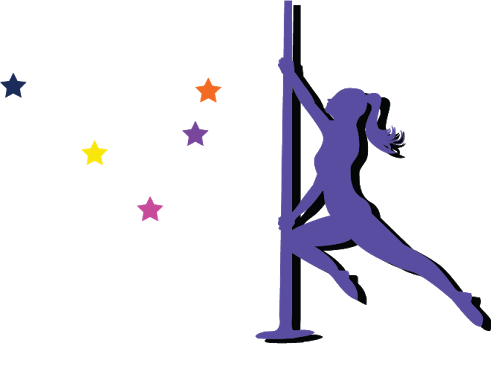Taking on a new form of exercise
On a mild Monday evening in February, I found myself in front of an inconspicuous glass door in Center City labeled simply as “POLE HAUS.” After a long walk down a bright-red hallway and up four floors on an elevator, I arrived at my destination: a one-hour long, introductory pole dancing class.
Pole Haus, located at 1719 Chestnut St. in Philadelphia’s Rittenhouse neighbor- hood, is the city’s only pole dancing studio. It offers one-off classes for $25, or you can choose from a variety of membership options ranging from $55 per month for an introductory membership, to $110 per month for a premium membership.
Pole Haus’ continuing purpose is “to provide high quality instruction of pole dance and associated workouts in a safe and encouraging environment,” according to its website.
Truthfully, I had no idea what to expect from this class. I was told that pole dancing could be anything that I wanted it to be, but I didn’t necessarily know what that meant.
“[It can be] sexy, tricks based, lyrical, ballet-inspired,” said Jules Corrado, Pole Haus’ owner and instructor. “There is room for all styles, and no pressure to be anything that you are not.”
After filling out a precautionary waiver, removing my shoes, and stripping down (pun definitely intended) to my shorts and sports bra, I made my way to the dance floor and selected a pole in the middle of the room, directly behind Alfie Sosa, my class’ instructor.
Sosa has performed in showcases and won various competitions over the course of his nearly seven-year career in pole dancing. During our class he maintained a palpable confidence that instantly assuaged the room, including my anxious mind.
The majority of Pole Haus’ students are women, including everyone from house- wives, students, doctors, researchers, scientists and dancers, according to Sosa.
“Some women come to us with a specific goal,” Sosa said. “Losing weight, to learn to pole dance or just curiosity. We have also seen an increase in the amount of men who want to try it.”
My own introductory class solidified Sosa’s claim. All but one participant had seemingly never had any other pole dancing experience whatsoever. There were women in their late-20s who had just come from work, swapping skirts for Spandex and college-aged women covered in tattoos observing their posture in the mirror. In the class just before mine, there had been a middle-aged man in the back corner who moved with inspiring self-assurance.
Roughly 20 minutes of warm-ups later, we began basic pole exercises. Locking my knee and ankle around the metal pole and placing my hands high above my head, I was instructed to pull myself up onto the pole.
In that moment I realized I have no viable upper-body strength at all.
After three shaky attempts to pull myself up, I let out an exasperated sigh. Sosa noticed my frustration and came to my aid, readjusting my form and telling me to try again. I did it and it wasn’t great— but, I did it.
I wasn’t trying to be perfect. I knew that wasn’t possible. I was, however, trying my best to disregard my shoddy form in relation to my overall experience, as I wanted to feel good much more than I wanted to look good.
Sosa explained that Pole Fitness allows you to explore who you want to be, or even who you already are deep down inside.
“The more you learn, the more movement vocabulary you have to express yourself,” Sosa said. “And I think that is what makes it different from other workouts.”
I made another attempt using my other leg, then took a long look at myself in the mirror. Although I had just unsteadily hoisted myself onto a metal pole surrounded by a dozen total strangers, I felt completely empowered.
“I have seen people’s body images transform, and the community we have is so supportive that you can’t help but increase in confidence,” Corrado said. “It takes work, but it is so worth it.”
At this point in class, Sosa then began teaching a basic pole dancing routine to the class. As he glided around the pole, I became hyper-aware of my lack of coordination again. As we began following his lead, I caught myself mumbling eight-counts under my breath just to keep up.
We went step-by-step through the routine about half a dozen times, and Sosa asked for a “sexy” song request that could accompany our work. The class decided on Flume’s song “Never Be Like You,” and we took our position.
I stared at myself in the mirror again. On Sosa’s say-so, we began gliding around the pole, always maintaining a point of contact no matter what. We repeated the dance until the end of the four-minute track before collapsing on the floor for cool-down stretches.
“As you keep coming to class and you progress, not only do you realize you are getting stronger, toned and are losing weight, but also you are taking your body on a journey in which you discover you can do things that you never imagined you were able to do,” Sosa said.
At the end of the class, I felt like a noodle. I was, however, a noodle with an enlightened sense of deeper assuredness in myself. I was the perfect plate of spaghetti at your favorite Italian restaurant. I had never felt better.














































